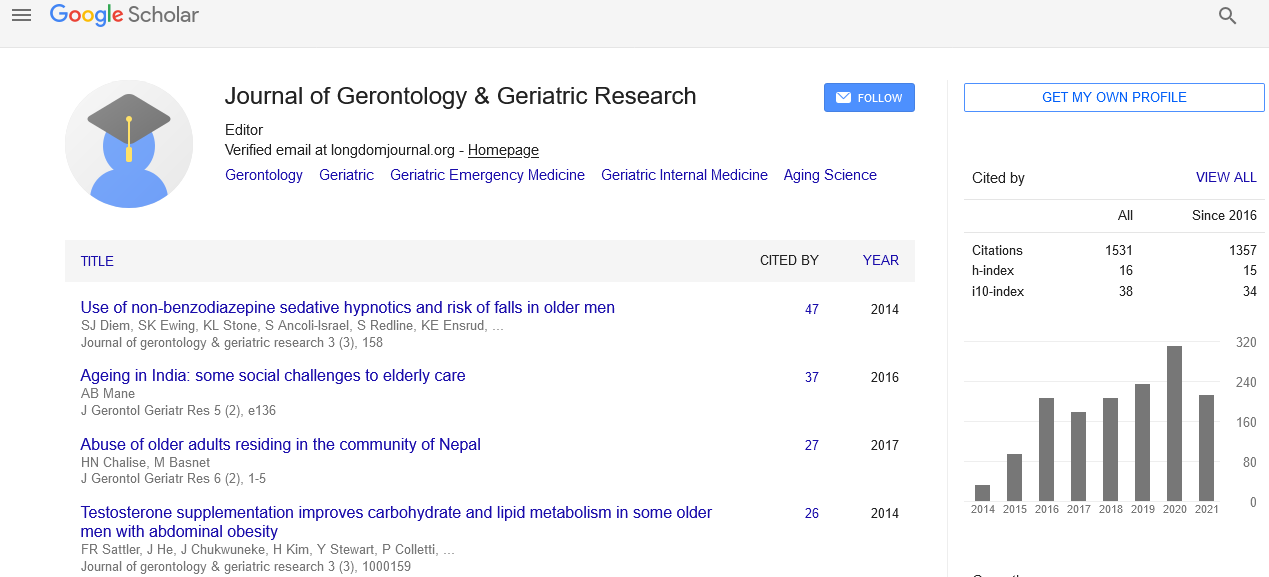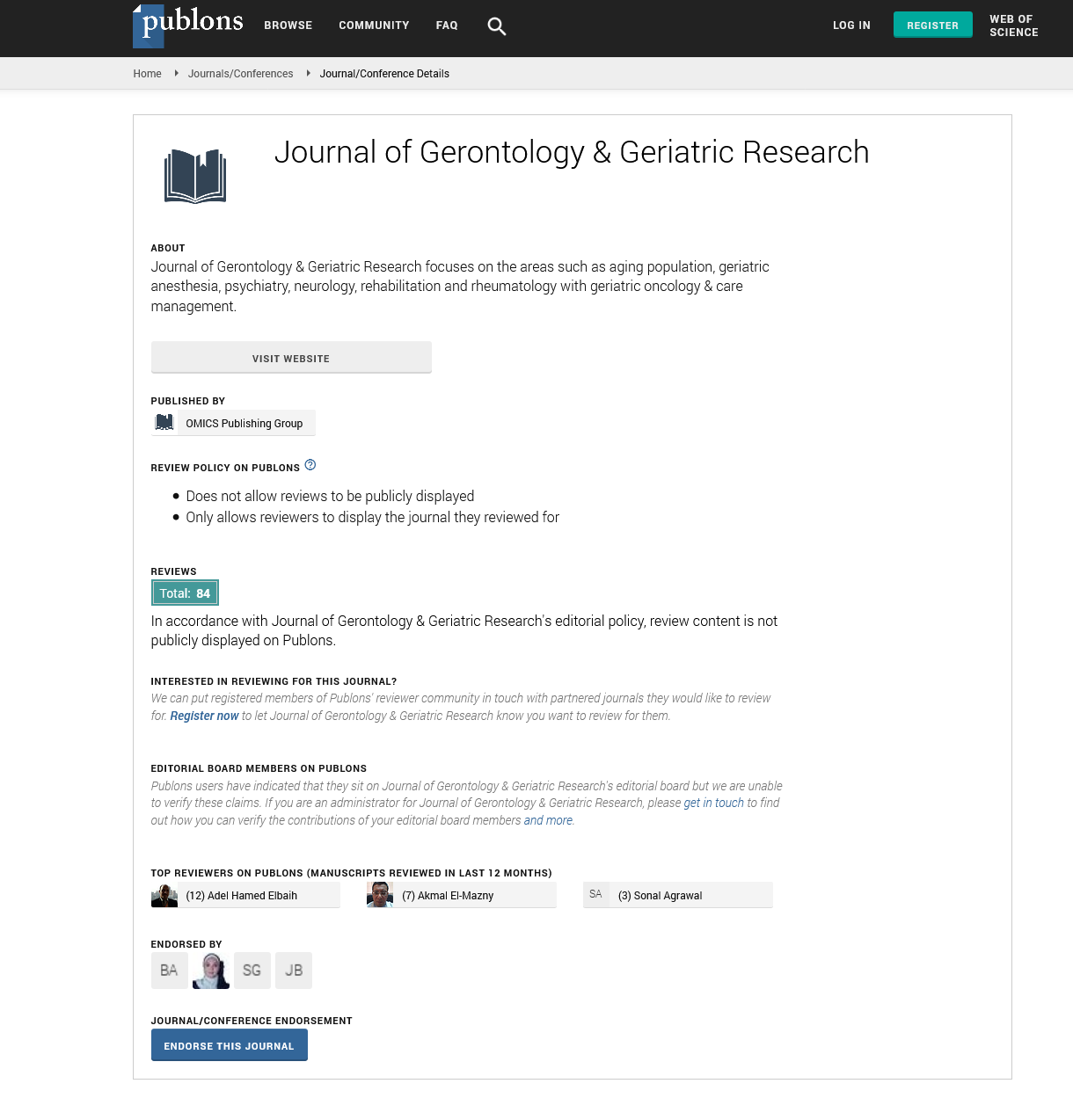PMC/PubMed Indexed Articles
Indexed In
- Open J Gate
- Genamics JournalSeek
- SafetyLit
- RefSeek
- Hamdard University
- EBSCO A-Z
- OCLC- WorldCat
- Publons
- Geneva Foundation for Medical Education and Research
- Euro Pub
- Google Scholar
Useful Links
Share This Page
Journal Flyer

Open Access Journals
- Agri and Aquaculture
- Biochemistry
- Bioinformatics & Systems Biology
- Business & Management
- Chemistry
- Clinical Sciences
- Engineering
- Food & Nutrition
- General Science
- Genetics & Molecular Biology
- Immunology & Microbiology
- Medical Sciences
- Neuroscience & Psychology
- Nursing & Health Care
- Pharmaceutical Sciences
IMPACT OF A MULTIDISCIPLINARY APPROACH ON MORTALITY AFTER HIP FRACTURE SURGERY
5th International Conference on Geriatric Medicine & Gerontological Nursing
November 14-15, 2016 | Atlanta, USA
Silvia Forni, F.Pieralli, C.Lorini, A.Sergi, A.Vannuccia and G.Bonaccorsi
University of Florence, Italy
Accepted Abstracts: J Gerontol Geriat Res
Abstract:
Introduction: Since most hip fractures occur in fragile patientâ??s, an important advance in the treatment may be a co-managed, multidisciplinary treatment with orthopaedic surgeons and geriatricians. This multidisciplinary care model (MCM) is implemented in some Tuscan hospitals, while in hospitals with an usual care model (UCM) medical consultation is required only as deemed necessary by the admitting surgeon. The primary aim of this study was to assess the effect of MCM on 30-day mortality, compared with UCM. Methods: A retrospective study of patientâ??s with a main diagnosis of hip fracture, as reported in the hospital admission discharges, aged 65 years and older, undergoing surgery in Tuscan hospitals from 1 January 2010 to 31 December 2013, has been conducted. A multilevel logistic regression model was performed to assess the effect of MCM vâ??s UCM. The Charlson Comorbidity Index (CCI) was used as a proxy of case mix complexity. Results: Patients included was 23,973: 23% men and 77% women; the mean age was 83.5 years; 62.3% of patients were in hospitals with standard care 37.7% in hospitals with multidisciplinary care. The percentage of patients with a CCI of 1 or 2+ was significantly higher in the MCM. Length of stay was higher in MCM than UCM (12.6 days vs 10.3 days). The multilevel analysis showed that mortality was significantly higher in the UCM, after adjusting for gender, age, comorbidity and timing of surgery (OR=1.32; 95% CI 1.09-1.59; p=0.004). Conclusions: A co-managed approach to hip fracture, with orthopaedic surgeons and geriatricians, offers a multidisciplinary pathway for the elderly and leads to reduce mortality after hip fracture surgery.


